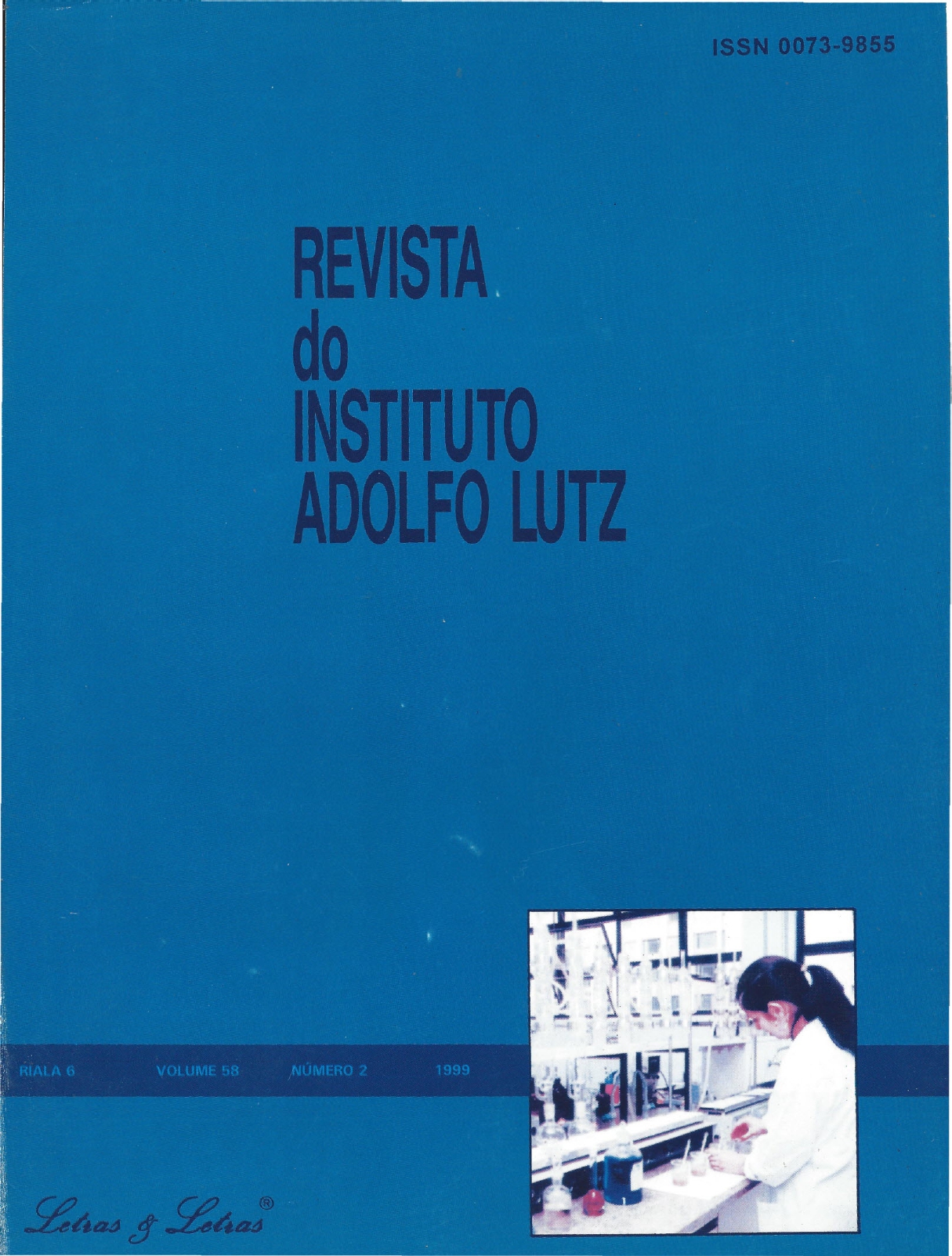Abstract
The use of propionic acid as a preservative in products such as chocolate, pickles, pastries and bakery goods is widespread because of its fungicidal properties. This acid is nonnally employed in fonn of its salts. A total of 191 samples of loaf bread were analyzed. The samples were collected from supermarkets and bakeries ofthe nine regions ofBelo Horizonte. The propionic acid was extracted with ethyl ether in acid medium with quantification by gas chromatography using a flame ionization detector. Concurrently, the moisture and the counting of fungi and yeast was done.The analyses were executed during the period of validity of the products; a large variation in these periods was observed even among products of the same brand and type of bread. The mean propionate content encountered was 0,13%, expressed as propionic acid. The degree of condemnation was 12,56%, based on the brazilian legislation. A total of 12,70% of the samples presented fungi and yeast counts over the maximum limit. In the samples analyzed for moisture, 66% presented levels above the maximum limit of 35% w/w for whole wheat or rye bread or 30% w/w for others breads.
References
2. BRASIL, Leis, Decretos, etc, Resolução nº 04 de 24 de novembro de 1988 do Conselho Nacional De Saúde, M.S, Diário Oficial, Brasília, p. 24716 24723,24 de novembro 1988.
3. BRASIL, Leis, Decretos, etc - Resolução nº 12/78 da Comissão Nacional de Normas e Padrões para Alimentos, Diário Oficial, Brasília, Seção 1 parte 1 - 24 de julho de 1978
4. BRASIL, Leis, Decretos, etc. - Portaria 451 de 19 de setembro de 1997 da Vigilância Sanitária Diário Oficial, nº 182- Seção 1,p. 21005-21012, de 22 de setembro de 1997.
5. CAMPOS,G. NELSON, D.; RIBEIRO-CUNHA, M. R.; FRANKLIN, H. O. H.; GOMIDES, M. F; NAVEIRA, R. M. P.; PEIXOTO, T. M. G. Padronização de Metodologia para
determinação de ácido propiônico em pães de forma. Ciênc. Tec. Alim., 17 (2): 196~200, mai-ago, 1997.
6. DOORES, S. Organic Acids - antimicrobial in foods. In: Food Science -A series of Monographs. New York, Marcel Deker Inc., 1983, capo 4, p. 75108.
7. FDA. Food and Drug Administration (21 cfr 1841095) (Sec. 687.500 silage ingredients - CPG 7126.21).
8. FRAZIER, W. C. Microbiologia de los alimentos Acribia, Zaragoza, 1972, 512p.
9. GOMES, F P. Curso de Estatística Experimental. Nob ed., 12 ed., Piracicaba, São Paulo, 1987,467 p.
10. LYNDSAY, R. C. Other desirable constituents of food. In: principles of Food Science Part I. food Chemistry, Fennerna, O. R. ed. Marcel Dekker, New York, 1976.
11. SÃO PAULO - Instituto Adolfo Lutz - Normas Analíticas do Instituto Adolfo Lut; - Métodos Químicos e Físicos para Análise de Alimentos, 3 ed. São Paulo, p. 189-197, 1985.
12. JAY, J. M. Microbiologia moderna de Ias Alimentos. Acribia, Zaragoza, 1973,319 p.
13,. ROITMAN, I.; TRAVASSOS, L. R.; AZEVEDO, J. L. Tratado de Microbiologia. Manole, São Paulo, 1988,186 p.

This work is licensed under a Creative Commons Attribution 4.0 International License.
Copyright (c) 1999 Instituto Adolfo Lutz Journal
